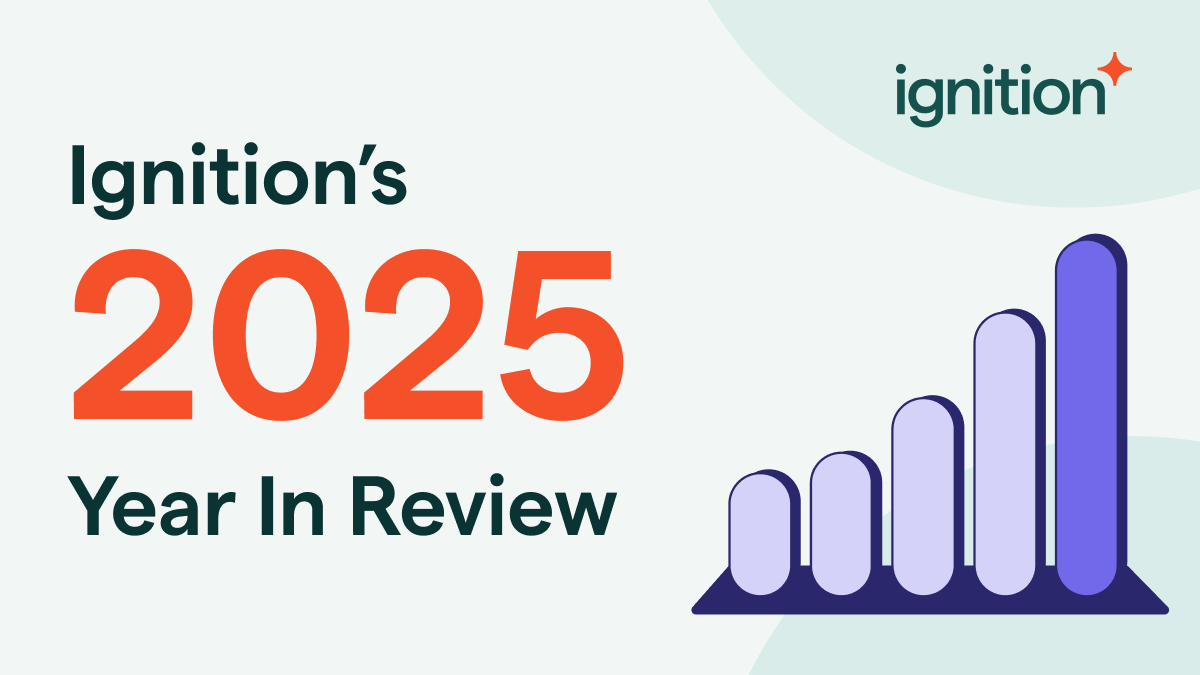Spotting buying signals: A guide to winning more clients

There’s a big difference between just hearing and listening to your clients—listening means tuning into the words, questions and even pauses to uncover what your clients really need or the signals that reveal what they’re ready for next. Every interaction holds potential clues about their readiness to buy your services. Spotting and responding to these buying signals can be the difference between closing the deal or missing out.
In this article, we’ll show you how to recognize the cues that matter, offer practical tips for timely responses, and demonstrate how these strategies strengthen client relationships while driving sales for service-based businesses. Let’s decode buying signals and turn them into action steps.
Key takeaways
- Specific questions about pricing, onboarding, or timelines are strong buying signals—respond with clear, detailed answers to build trust.
- When prospects share pain points or compare solutions, it’s your chance to highlight how your service offerings address their needs and outshines the competition.
- Decision-maker involvement, proposal discussions, or urgency around implementation all signal readiness—act promptly with tailored next steps like demos or proposals.
- Repeated engagement with your resources, like case studies or webinars, shows growing interest—use this data to personalize your outreach and deepen the conversation.
- Strong follow-ups with clear actions—like scheduling a demo or clarifying terms—keep momentum and help convert interest into commitment.
Understanding buying signals
Buying signals are everywhere—a question asked in a meeting, a click on your website’s lead magnet resource, behavioral patterns, or situational cues that customers drop when they’re close to making a purchase. In a B2C setting, these might sound like questions about pricing, features, or availability. In B2B, they often come up during discussions about return on investment (ROI) or specific integrations. Spotting these signals is a skill but also an opportunity to fine-tune your approach, build trust, and guide customers toward a decision with confidence and ease.
Buying signals can be verbal or non-verbal
Buying signals can be easy to spot or require a closer look. Verbal cues, like a customer asking, “How soon could we start using this?” are often straightforward. Non-verbal signals, such as spending more time on your website or downloading resources, need more observation but can reveal just as much about a prospect’s readiness to buy.
What buying signals mean for sales
Buying signals are valuable for the sales team to know the customer journey and what stage they are at, and plan their touch strategy accordingly. These very signals are the bridge between interest and action. Specific service or product questions signal readiness, while discussions about ROI reveal a need for reassurance. Capitalizing on these signals means timely and relevant responses. Sales teams can tailor their messaging to the customers’ questions to provide additional information, or even close the deal by addressing their pain points. On the flip side, missing these cues can stall momentum—or cost you the deal entirely.
Pro tip: Look beyond the obvious. Even subtle actions, like revisiting your website or engaging with a shared proposal, can signal readiness. These moments are goldmines for a thoughtful follow-up.
Buying signals for marketing
For marketing teams, buying signals are like breadcrumbs leading to high-intent prospects. They help you time your campaigns, tailor your messaging, and focus your resources where they’ll have the biggest impact. For example, a prospect downloading a whitepaper or attending a webinar is signaling interest—and a potential readiness to engage more deeply.
Practical insight: Pair buying signals with automation tools to act faster. Set up triggers for actions like resource downloads or form submissions, and follow up with personalized content that keeps the conversation moving.
11 examples of strong buying signals
Whether verbal or non-verbal, buying signals show when a lead is leaning on a decision. Here’s a list of buying signal examples you should pay attention to:
1. Repeated interactions with your paid, owned, and earned media assets
When prospects keep coming back—whether through clicks on paid ads, comments on social posts, or repeat visits to your blog—it’s not just coincidence. It’s a signal they’re seriously evaluating your offering and considering how it fits their needs. Actions like downloading resources or revisiting your site suggest growing interest, while signing up for a trial or demo takes things a step further.
Here’s where your follow-up matters most. After a trial or demo, timely and tailored guidance helps turn curiosity into commitment. Focus on answering their questions, addressing their challenges, and showing how your solution delivers value. The sooner you act, the better your chances of closing the deal.
2. Specific questions a potential customer asks
When a potential customer starts asking specific questions about your service or product, it’s a clear buying signal. Such questions show that they’re moving closer to a decision, like:
- “Do you offer support for multiple users?”
- “Does this integrate with tools we already use?”
- “Can I have a trial extension?”
- “How hands-on is your onboarding process?”
- “Do you offer ongoing support or just one-off consultations?”
- “Can you customize your services to fit our industry?”
- “What does the reporting or communication cadence look like?”
- “What’s the typical timeline for achieving results?”
These kinds of questions show that the prospect is evaluating how your service, product or solution aligns with their challenges, goals and workflow before investing.
3. Mapping the pain points to the service or product
A prospect openly discussing their challenges or pain points is a clear buying signal. For example, questions like “We’re struggling with manual processes; could your software automate this?” or “We’re looking for a software to improve client onboarding— how does your system help?” they want to solidify that your service or product is actually the answer to their problems.
It’s important to provide clarity here and demonstrate exactly how your solution will address their issues. A great way to do this is by using examples, testimonials and by showing a direct connection between their needs and your service or product features.
4. Opening up about their concerns and past experiences
When prospects share their past experiences with similar situations or solutions, they’re signing a need for trust and genuine interest in finding the right service, product or solution.
Their openness reflects their will to engage deeply and measure how your services will resolve their issues. It’s your chance to listen carefully, empathize and provide specific reassurances proving how your offering can overcome their past challenges. Building on this mutual trust reinforces their confidence in committing to your solution.
5. Comparing your solution to others
Your services or solutions being compared to competitors is a clear sign that your prospect sees your business as a strong contender.
This is your opportunity to highlight unique benefits of your business and what sets it apart. Be as honest and transparent—acknowledging strengths and limitations to build trust. Engaging in these comparisons helps position your business as the right choice and moves the prospect one step closer to making a commitment.
6. Proposal and budget discussions: The tipping point toward a decision
When prospects start asking about pricing details or extra costs, they’re not just curious—they’re trying to fit your offering into their budget. Budget discussions are even more telling. They show the prospect sees value in your services and is figuring out how to prioritize it financially.
But the clearest buying signal? A request for a proposal. This means they’re seriously evaluating your offering—either to align it with their needs or to compare it against other options. This is where a strong and tailored proposal makes all the difference. Including packages and tiered options—such as basic, standard, and premium packages—can cater to different needs while showcasing your flexibility and value.

Ensure your proposal highlights the key terms, the unique benefits you bring, and, most importantly, how your solution addresses their specific challenges. A tailored, well-crafted proposal can turn interest into action and seal the deal.
7. Involvement of decision-makers
The point where higher-level decision makers join in on the discussions, it’s a strong signal that the buying process is progressing. Executives or business heads are usually brought in to evaluate final details and approval specific purchases. This shows that your prospect has almost finished making their mind up about the purchase and is now focused on aligning with broader business goals.
Here you have a chance to address strategic challenges, highlight ROI and showcase how your product or service supports organizational objectives.
8. Post-meeting follow ups
When a prospect follows up after a meeting—whether they’re asking for testimonials, additional materials, or clarification—it’s a strong indicator they’re still engaged and considering your solution. Their follow-up keeps the conversation alive and shows that your offering is top of mind.
But follow-ups shouldn’t only come from them. Consistent, timely responses from your side are just as important. Acknowledge their questions, provide personalized next steps, and keep the momentum going. Thoughtful follow-ups not only strengthen trust but also bring you one step closer to closing the deal.
9. Sense of urgency: Matching the prospect’s pace
When a prospect says things like, “How soon can we start?” or “We need this implemented by next week,” they’re signaling a clear need for quick action. At this stage, they’ve moved beyond evaluation and are focused on execution.
Your response needs to match their urgency. Be swift and proactive, providing clear timelines and actionable next steps. Show that you’re ready to deliver efficiently and effectively. This not only meets their immediate needs but also reinforces confidence in your ability to support their goals.
10. Exploring the post-sale services and support
When prospects ask about post-sale services, it’s a clear buying signal. Questions like, “What kind of onboarding support do you offer?” or “Is ongoing support included in the subscription?” show they’re already imagining themselves as your customer. They’re seeking reassurance that you’ll deliver long-term value and be there to support their needs.
Don’t overlook these questions—use them as an opportunity to emphasize how your service goes beyond the sale, offering seamless onboarding and reliable support that builds lasting relationships.
11. Non-verbal cues in discovery calls and meetings

Sometimes, what isn’t said speaks the loudest. During discovery or sales meetings—whether in person or virtual—non-verbal cues can reveal just as much as verbal ones about a prospect’s engagement and intent.
In virtual meetings, watch for signs like prolonged focus on the screen, showing they’re tuned into your presentation without distractions. Taking notes when you highlight specific features or benefits signals they’re seriously considering how your solution fits their needs. Subtle but powerful gestures like frequent nodding suggest agreement, while leaning forward indicates heightened interest and attentiveness.
These cues are your green lights to dig deeper, address specific concerns, and move the conversation toward a decision. Reading the room—even if it’s on a screen—can help you turn interest into action.
Read next: How to optimize your discovery calls to land higher price deals
How to respond to buying signals to close more sales
Identifying buying signals is only half the job. The real impact comes from how you respond. When prospects show interest or intent, your ability to act strategically and promptly can make all the difference in converting them into paying customers. Each buying signal presents a unique opportunity to deepen engagement and guide them closer to a decision. Here are some key approaches to responding effectively.
Respond quickly, but with purpose
When a prospect signals interest, your response time can make or break the momentum. Quick replies show attentiveness and build confidence, but rushing without thought risks losing their trust.
Take the time to craft a well-informed, personalized reply that addresses their specific needs, but don’t let the clock tick too long. Delays leave room for doubt—or a competitor to step in. A prompt and thoughtful response keeps the conversation moving and your prospect engaged.
Make it personal
No two prospects are the same, and neither should be your responses. Whether they’re from a fast-scaling tech company or a local business looking for efficiency, tailoring your reply shows you’ve truly paid attention to their priorities and challenges.
For a tech prospect focused on scalability, highlight growth-friendly features. For a smaller business, focus on affordability and simplicity. Draw on what you’ve learned—questions they’ve asked, materials they’ve downloaded, or concerns they’ve shared—and reflect that understanding in your response. This personal touch is what sets you apart and builds trust.
Create urgency without going too far
Encouraging prospects to take action sooner can nudge them toward a decision, but it’s all about balance. Genuine urgency—like a limited-time offer or an upcoming pricing change—can inspire momentum without feeling forced. The key is to frame it in a way that’s helpful, not pushy. Show them the value of acting now, and let authenticity drive the conversation forward.
Clarify with the right questions
Smart questions show you’re not just trying to make a sale—you’re committed to solving real problems. They help you dig deeper into a prospect’s needs, ensuring your response is exactly what they’re looking for.
For instance, ask, “What’s the biggest result you’re aiming for with this solution?” or “Can you walk me through the challenges your team is tackling right now?” Thoughtful, targeted questions like these demonstrate that you’re listening, learning, and ready to offer tailored value.
Communicate how their problems can be solved with by your product or service
One of the most effective ways to show value in your product is by mapping your prospect’s pain points to your product. You create a compelling narrative when you directly address their challenges and how your product will resolve them. Using concrete, real-life examples and data-driven analytics to map out a plan to benefit their business goes a long way into winning and keeping long-term clients.
Offer them clear next steps
Setting clear next steps is key to guide your prospects towards conversion. Avoid stalling the momentum by clear and actional next steps. Setting up a demo call to further explore the features in detail or sharing a proposal for review are great examples of next steps to keep the ball rolling.
Leverage the data collected through demos and trials
Look into valuable insights collected during demos and trials to better understand your prospect’s needs, preferences and engagement level. Conduct a customer study to see how they interacted with your product or service, such as the features they interacted the most, or the questions they asked.
Differentiating strong buying signals from the weak
Not all buying signals carry the same weight and understanding the differences allow you to focus your efforts on leads that are closer to converting.
Strong buying signals
- Asking detailed questions about pricing or terms
- Requesting a demo or trial
- Requesting a proposal
- Involving decision-makers in discussions
- Discussing specific ROI or value metrics
- Expressing a sense of urgency, e.g., “How soon can we start?”
- Discussing implementation timelines
- Following up promptly after a meeting or demo
- Engaging deeply with resources like case studies or whitepapers
- Comparing your solution to competitors
- Asking about post-sale support and onboarding
Weak buying signals
- Browsing your website without visiting key pages
- Liking or sharing a social media post
- Asking generic questions about your services
- Signing up for a newsletter
- Downloading a top-of-funnel ebook
- Clicking on an ad once
- Viewing your 'About Us' webpage without other actions
- Reading your blog but not interacting further
How can Ignition help increase your sales?
Ignition makes managing leads, proposals, and client relationships effortless—helping you turn prospects into paying customers faster. Here’s how:
- Customizable proposals and pricing: Create tailored, professional proposals that showcase your value and simplify the approval process.
- Integrated billing and payments: Streamline onboarding with built-in payment options that reduce friction and boost conversions.
- Automated follow-ups, proposal reminders: Never miss a lead with automated reminders that keep opportunities on track.
- Insights and analytics: Identify high-intent prospects with performance tracking and focus on the leads most likely to convert.
With Ignition, you can skip manual work, strengthen client relationships, and grow your business with ease. Ready to take your sales to the next level? Try for free.


